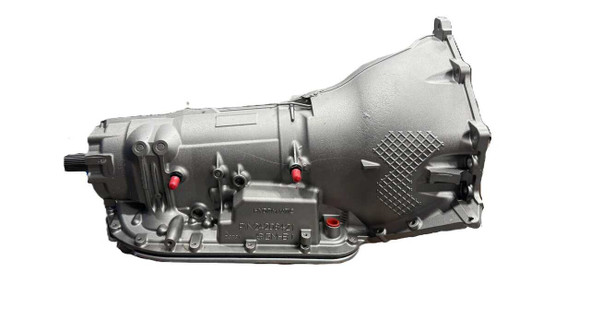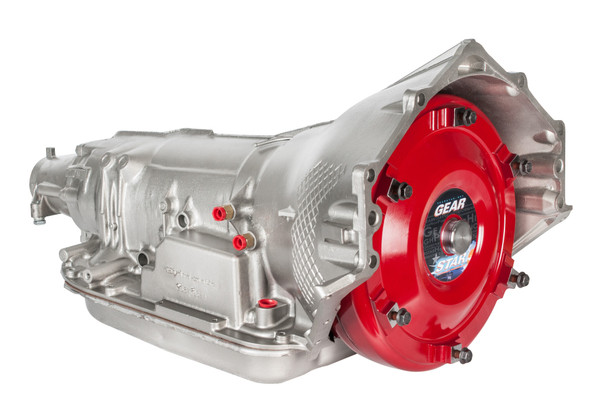- Product
- Qty in Cart
- Quantity
- Price
- Subtotal
-

 Gearstar Performance Transmissions
Gearstar Performance TransmissionsChevrolet 4L80E Performance Transmission 2wd - Level 5 Pro Series
$9,495.00 -


-

-

-
 Gearstar Performance Transmissions
Gearstar Performance TransmissionsChevrolet 4L80E Performance Transmissions 2wd - Level 2
$4,495.00 -


-


-


-

 Gearstar Performance Transmissions
Gearstar Performance TransmissionsChevrolet 4L80E Performance Transmissions 4x4 - Level 2
$4,495.00 -

 Gearstar Performance Transmissions
Gearstar Performance TransmissionsChevrolet Supermatic 4L80E Performance Transmission 4x4 Big/Small Block - Level 5
$7,995.00 -

 Gearstar Performance Transmissions
Gearstar Performance TransmissionsChevrolet 4L80E Performance Transmission 4x4 Big/Small Block - Level 4
$6,495.00 -

 Gearstar Performance Transmissions
Gearstar Performance TransmissionsChevrolet 4L80E Performance Transmission 4x4 Big/Small Block - Level 3
$5,495.00 -

 Gearstar Performance Transmissions
Gearstar Performance TransmissionsChevrolet 4L80E Performance Transmission 4x4 Big /Small Block - Level 2
$4,495.00 -
 Gearstar Performance Transmissions
Gearstar Performance TransmissionsChevrolet 4L80E Performance Transmission 2wd Big/Small Block - Level 4
$6,495.00 -
 Gearstar Performance Transmissions
Gearstar Performance TransmissionsChevrolet 4L80E Performance Transmission 2wd Big/Small Block - Level 3
$5,495.00 -
 Gearstar Performance Transmissions
Gearstar Performance TransmissionsChevrolet 4L80E Performance Transmission 2wd Big/Small Block - Level 2
$4,495.00 -
 Gearstar Performance Transmissions
Gearstar Performance TransmissionsChevrolet 4L80E Performance Transmission Big/Small Block 2wd - Level 5
$7,995.00 -

 Gearstar Performance Transmissions
Gearstar Performance TransmissionsChevrolet 4L80E Performance Transmission Big/Small Block 2wd - Level Pro Series
$9,495.00
About 4L80E
The GM 4L80E is a heavy-duty, four-speed overdrive transmission built to handle high horsepower and torque. It's a top choice for demanding applications like towing, racing, and off-road builds.
Known for its strength and versatility, the 4L80E works well with a wide range of engine combinations and power levels.
Benefits of the 4L80E Automatic Transmission
If you're considering the 4L80E for your next build, there are many advantages worth highlighting, especially if power, durability, and adaptability are at the top of your list:
Heavy-Duty Strength – Built as a successor to the legendary TH400, the 4L80E transmission was engineered with strength in mind. It features a strong cast-aluminum case, beefy internal components, and a torque capacity capable of handling up to 450–500 horsepower in stock form.
Performance-Friendly Design – The 4L80E is well-suited for performance builds and can be tailored to meet specific power goals or reliability targets. High-performance and custom-built versions are available from reputable builders, featuring upgraded clutches, hardened input shafts, improved valve bodies, and torque converters designed for optimal launch and lock-up control.
Modern Electronics with Full Control – Unlike earlier transmissions, the 4L80E features full electronic control. This allows users to fine-tune shift timing, line pressure, torque converter lockup, and more. With the right controller, you can dial in your settings for street, strip, towing, or off-road driving.
Swap-Ready for Modern Builds – With widespread aftermarket support, the 4L80E transmission is easy to install into non-original vehicles. Adapter kits, standalone controllers, and custom wiring harnesses make swaps into LS, big-block, small-block, or even non-GM engines straightforward. It's a favorite among builders who need a bulletproof transmission for a high-output project.
Frequently Asked Questions About GM 4L80E Transmissions
Can I run a 4L80E without a computer?
No, the 4L80E transmission cannot operate properly without a computer-based controller. The ‘E’ in 4L80E stands for electronic control, meaning the transmission relies on a transmission control unit (TCU) to manage critical functions like shift points, line pressure, torque converter lockup, and overdrive based on sensor input.
Although this requirement adds complexity, it also offers extensive customization. Aftermarket controllers, which are essentially programmable computers, allow drivers to tailor shifting and performance to their exact needs. However, these controllers can add to the overall cost of a 4L80E swap.
Several trusted companies, including Powertrain Control Systems (PCS), TCI, and Chevrolet Performance, supply reliable controllers and parts. It’s important to compare features and prices to find the best option for your setup and budget.
How much HP can a 4L80E handle?
As horsepower increases, so does the strain on the rest of the drivetrain, especially the transmission. Fortunately, GM fans looking to harness serious power have the 4L80E as a strong and reliable option. Based on the legendary TH400, the 4L80E was built for heavy-duty performance and can typically handle up to 450–500 horsepower in stock form.
With aftermarket upgrades, such as improved clutches, valve bodies, and torque converters, it can reliably support 700+ horsepower, depending on the build quality and intended use.
What Vehicles Have the 4L80E Transmission?
Introduced by GM in 1991, the 4L80E was built for strength, durability, and versatility. Over the years, it’s been used in everything from heavy-duty trucks to luxury cars.
Heavy-Duty Trucks and SUVs
Originally designed for GM’s toughest trucks and SUVs, the 4L80E appeared in vehicles like the Chevrolet Silverado, Suburban, GMC Sierra, Yukon XL, and the Hummer H1, platforms where towing and torque handling were essential.
Commercial and Fleet Vehicles
The 4L80E is also widely used in utility vehicles such as box trucks, commercial vans (Chevrolet Express, GMC Savana), motorhomes, school buses, and service fleets. Its ability to manage heat and heavy loads makes it ideal for daily work demands.
Luxury and Exotic Cars
Though not typically factory-installed, the 4L80E has been used in select Bentley, Jaguar, Rolls-Royce, and Aston Martin models, often in custom builds where durability and smooth performance are key.
Muscle Cars and Classic Car Swaps
This transmission is a popular choice for high-powered muscle car builds and restomods. Its overdrive gear, electronic tuning, and strength make it a great match for LS and big-block engine swaps in classics like the Chevelle, Camaro, and GTO.
What's The Difference Between the 4L80E and TH400?
The 4L80E is built on the robust foundation of the TH400, sharing much of its strength and internal components. What sets the 4L80E apart is its addition of an overdrive gear, advanced electronic controls, and a lock-up torque converter.
It offers a 25% overdrive and is about 4 inches longer than the TH400, with the transmission mount shifted rearward by 1.5 inches. Due to its electronic systems, the 4L80E weighs roughly 50 pounds more than the TH400, but this added weight comes with greater functionality and adaptability.
What engines bolt up to 4L80E?
The 4L80E transmission features a die-cast aluminum case and was primarily designed to bolt up to Chevrolet-style GM engines using the standard GM big-block and small-block bellhousing pattern. This includes popular engines such as the LS-series, Gen I small-blocks, and big-block V8s.
With the appropriate flexplate, torque converter, and adapter kits, the 4L80E can also be bolted to a variety of other engine types, including modern Gen V LT engines and even non-GM powerplants in custom applications.
This versatility makes it a popular choice for engine swaps, especially in muscle cars, hot rods, trucks, and off-road builds where durability and power handling are essential.
Buy a Custom-Built 4L80E Transmission from Gearstar Performance Transmissions
If you’re planning to swap in a 4L80E transmission, trust Gearstar to build a custom unit tailored to your exact specifications. Each of our transmissions is built-to-order by a single master technician and tested under real-world conditions to ensure reliability, strength, and performance.
Backed by a reputation for quality craftsmanship and outstanding customer satisfaction, our 4L80E transmissions are ideal for high-horsepower builds, towing applications, or any demanding setup.
When installing or operating your 4L80E, be sure to follow the proper start-up procedures to ensure peak performance and long-term durability. Let Gearstar take the guesswork out of your build, and get the power and confidence you need from a transmission built to perform.

